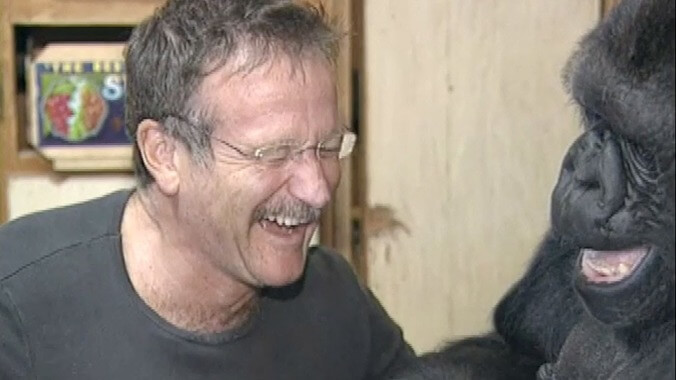R.I.P. Koko the Gorilla

Koko, the western lowland gorilla who changed humanity’s understanding of animal communication with her mastery of American Sign Language, has died. In a statement, the research center where Koko lived for most of her life says, “The Gorilla Foundation is sad to announce the passing of our beloved Koko. Her impact has been profound and what she has taught us about the emotional capacity of gorillas and their cognitive abilities will continue to shape the world.” The famous gorilla reportedly died in her sleep on Tuesday morning. She was 46.
Born in the San Francisco Zoo in 1971, as a newborn Koko (who was originally named Hanabi-ko, Japanese for “fireworks child”) was selected by a young animal psychologist named Francine “Penny” Paterson for an experiment in teaching animals sign language. Koko took to it, to say the least, eventually learning more than 1,000 signs as well as understanding spoken English. She became a celebrity as a result, appearing on the cover of National Geographic multiple times. She was also the subject of multiple documentaries, including Barbet Schroeder’s Koko: A Talking Gorilla (1979) and Koko—The Gorilla Who Talks (2016). (The latter is currently available on Netflix.) She was also visited by celebrities like Fred Rogers (an encounter that appears in the new documentary Won’t You Be My Neighbor?), Betty White, and Robin Williams.
Even more remarkable than the discovery of Koko’s language ability was the empathy she appeared to express with those skills. Her love of cats was well documented—“Three days before Koko’s 12th birthday, Dr. Patterson asked the gorilla what gift she wanted. Koko signed, ‘cat,’” the Gorilla foundation writes in the introduction to the children’s book Koko’s Kitten—and she had a number of kittens, who she gave names like All Ball, Lipstick, Ms. Gray, and Smoky, and whose deaths she appeared to mourn, over the years. In 2012, Koko accomplished another first for her species by learning to play the recorder, displaying breath control beyond what scientists thought was capable for great apes.
The Gorilla Foundation’s work has been controversial, with some scientists hypothesizing that Koko was simply mimicking the gestures and emotional responses she observed in her caregivers. But while the scientific consensus is still out, as a media figure Koko was widely beloved, with thousands of visitors mourning her on the Gorilla Foundation’s Facebook page and website, which is overwhelmed with traffic as of this writing.